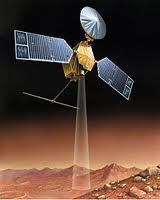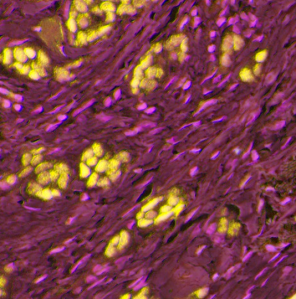Science needs you
Recently, I was excited to announce I’d received a postcard from Mars, a photograph of the Martian terrain taken by NASA’s HiRise satellite. It’s not every day you get to influence the targets of a satellite in orbit around another planet, so it was quite a thrill to see NASA take up my suggestion, and I’d like to think I’ve contributed to the body of knowledge documenting the evidence for a watery past on Mars.
 I mentioned this to a friend and they said something to the effect of, “Oh, but you’d know where to look.” Implicit in that was (a) that I somehow know something unique about Mars and (b) that they don’t, or that they couldn’t come up with some interesting geological feature for investigation. Both of these assumptions are wrong. I explained that I was armed with nothing more than amateur curiosity, and that they could find interesting features if they looked, but they weren’t convinced, and that got me thinking about how sometimes we sell ourselves short, especially when it comes to understanding science.
I mentioned this to a friend and they said something to the effect of, “Oh, but you’d know where to look.” Implicit in that was (a) that I somehow know something unique about Mars and (b) that they don’t, or that they couldn’t come up with some interesting geological feature for investigation. Both of these assumptions are wrong. I explained that I was armed with nothing more than amateur curiosity, and that they could find interesting features if they looked, but they weren’t convinced, and that got me thinking about how sometimes we sell ourselves short, especially when it comes to understanding science.
Science needs you.
Seriously, science needs you as much as you and I need science. NASA made the HiRise satellite available publicly through HiWish so we could assist them in the exploration of Mars. I understand that the interface may be a little intimidating at first, but take a look at the areas of interest on Mars. Sign in, create a new suggestion, switch the background to elevation, zoom in, and look at what others have suggested and photographed, and before you know it, you’ll find some small corner of the red planet that no one else has considered.
Citizen science is an exciting way to participate in science projects and gain an appreciation of what science is and how science works. And there’s lots of fun things you can do:
Planet hunters – this is a leisurely way to spend a quiet Sunday morning
Study explosive outbursts from the sun – how cool is that?
Examine the moon’s surface – you’ll be surprised at how much variation there is
Review breast cancer cells for drug efficacy - and help find patterns that reveal potential new treatments and possible cures for cancer. Each slide you look at is someone’s life under the microscope, which is quite humbling.
Consider how ship logs reveal our changing climate – take a first-hand glimpse at how climate records are gathered from the logs of ships from World War II
Help categorize 30 years of cyclones – climate change need not be some aloof, mystical concept if you jump in and help scientists understand the severity of storms over several decades
Listen to whales talk – OK, you’re probably thinking this one is like listening to old Sting records, but by categorizing these calls we can understand what whales are saying to each other. And, no, they’re not saying, “Watch out for the guy eavesdropping with the microphone.”
And there’s more at the zooniverse. Citizen science is all about supporting scientific research by providing a helping hand, helping categorize important information so scientists have hard evidence with which to construct their theories. These theories then help explain the world in which we live and help us improve our quality of life moving forward.
 The breast cancer research is a particularly good example of why citizen science is important, as it is a double-blind review of drug efficacy tests. In an age of quacks and snake-oil salesmen, where everything from coffee enemas to crystals to baking soda have been proposed as “cures,” there is a need for the public to understand that only evidence-based medicine has any value. And as a citizen scientist, you can help gather that evidence.
The breast cancer research is a particularly good example of why citizen science is important, as it is a double-blind review of drug efficacy tests. In an age of quacks and snake-oil salesmen, where everything from coffee enemas to crystals to baking soda have been proposed as “cures,” there is a need for the public to understand that only evidence-based medicine has any value. And as a citizen scientist, you can help gather that evidence.
The phrase “alternative medicine” is a misleading. Panadol is an alternative to Nurofen, Duragesic is an alternative to morphine, but these are medicines to start with, carefully screened and tested, well-understood, with known efficacy.
Baking powder is not an alternative to anything other than yeast in baking.
One site even goes so far as to claim there are “hundreds” of “cures” for cancer but that the “politics of the Cancer industry keeps many of these hidden and forbidden.” Such alarmist, conspiratorial claims mislead thousands of innocent people desperately seeking genuine help.
If there is a conspiracy, it is a conspiracy to eliminate baseless, unproven, irrational and ultimately harmful practices that exploit vulnerable people in an unethical manner.
By participating in the review of double-blind clinical results you are contributing to understanding whether a particular approach to treating cancer is effective or not.
And it’s “double-blind” because the researchers collecting the samples have ensured they’re anonymous so there’s no bias. You too have no idea which patient or which drug results you’re examining. In this way, you can be confident that there’s no bias, no subtle weighting in the outcome. In effect, you are eliminating the possibility of any conspiracy, ensuring a particular therapy is judged on its merits and its merits alone.
If crushed unicorn horns, dissolved pixie wings or whatever other exotic “alternative” concoction passes a double-blind clinical test, wonderful. If not, junk it.
 Scientists are not the high priests of some new mystery religion. There’s no cordoned-off area behind the altar that is the sole domain of the most sacred, holy scientists. Science is for everyone. Participating in a citizen science project can help demystify science for you personally.
Scientists are not the high priests of some new mystery religion. There’s no cordoned-off area behind the altar that is the sole domain of the most sacred, holy scientists. Science is for everyone. Participating in a citizen science project can help demystify science for you personally.
What is science other than your inner two-year old asking, “Why?“
Science is a carefully measured, transparent, testable description of reality. Ever since we were children, we asked questions like, “Why is the sky blue?” At some point, some exasperated adult may have replied, “Just because.” And with those two words, thinking and reasoning were stifled. Science rekindles that interest. Science awakens within us our base sense of awe and discovery about this magnificent universe in which we live. We need to renew that childlike enthusiasm to learn and explore.
Science needs you, but not just to help, to understand.





